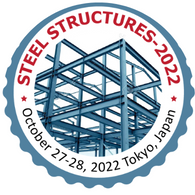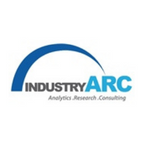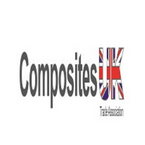Renowned Speakers

Marco Canal Stahlbau PICHLER
Italy

Rosalia Reyna Torrez Villca
Bolivia
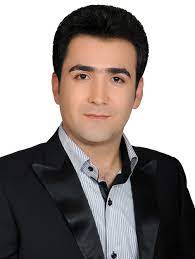
Sajad Hamedi Shahraki
Iran

Abdulqader S. Najmi
Jordan

Aigul Nagimova
Kazakhstan
Recommended Global Medical Webinars & Conferences
Asia Pacific & Middle East
Steel Structures-2022
About Conference
Steel Structure 2022 is the broadest of the engineering fields and we are glad to announce the “41st International conference on Construction & Steel Structures” during October 27-28, 2022 Tokyo, Japan
Steel Structure 2022 is a special designed cluster of 2 day event with the perfect blend of high quality presentations, keynotes addresses, oral presentations & plenary sessions, intense topics, panel discussions, workshops, symposiums, special sessions, student poster presentations, round table discussions, exhibitions, sponsorships, and ample networking opportunities along with collaborations and media partnerships which drive wide recognition and adds value to the enlisted career profiles from the world's brightest minds in engineering, and technology.
Steel Structure 2022 spotlights on the framework of the world which incorporate Water works, Sewers, Dams, Power Plants, Transmission Towers/Lines, Railroads, Highways, Bridges, Tunnels, Irrigation Canals, River Navigation, Shipping Canals, Traffic Control, Mass Transit, Airport Runways, Terminals, Industrial Plant Buildings, Skyscrapers etc. Among the significant subdivisions of the field are construction engineering, irrigation engineering, transportation engineering, soils and foundation engineering, geodetic engineering, hydraulic engineering, and coastal and ocean engineering. Steel Structure has advanced immensely in angles identifying with building, planning and maintaining up the world's fabricated and natural environments.
Conference Opportunities
- Speaker Keynote Presentation: 45 Minutes
- Plenary Presentations: 30 Minutes
- Young Researcher Forum: 30 Minutes
- Poster Presentation and Display
- Symposium Hosting (Team/Group of 5-6 members)
- Workshop Organizing: 60 Minutes
- For Researchers and Faculty Members
For Universities, Associations & Societies:
- Association/Society Partnering
- Collaboration Proposals
- Academic Partnering
- Group Participation
For Students and Research Scholars
- Poster Competition (Winner will avail Best Poster Award)
- Young Researcher Forum (YRF Award to the Best Oral Presenter)
- Student Attendee/Delegate
- Group Registrations
For Business Delegates
- Speaker Presentations
- Symposium hosting
- Book Launch event
- Networking opportunities
- Audience participation
For Product Manufacturers & Book Publishers
- Exhibitor and Vendor Booths
- Sponsorship Opportunities
- Books, Magazines & Product Launch
- Tech Talk Opportunities
- Scientific Partnering
- Marketing and Networking
Why to Attend
Steel Structure 2022 Conference will be a global meeting hub for Professors, Market Leaders, Experts, Students and Online visitors, Academicians and Business professionals, who are working in this field. This unique opportunity that we extend to our speakers and attendees is not being offered by any other conference organizers. Through this, the abstracts and research profiles of our speakers and organizing committee members are getting global visibility which is an additional feature that you would be receiving in addition to networking opportunities before, during and after the conference.
All the registered papers will be published in the associated engineering journal and will be featured in the conference proceedings.
Steel Structure 2022 Salient Features
- The Proceedings of the Conference will be published by one of the associated Journal.
- Each Paper will be assigned Digital Object Identifier ( DOI )
- Participation by Stalwarts from various international societies
- Internationally renowned speakers and scientists representation
- Career guidance for early career researchers and students
- Interesting scientific deliberations and discussions
-
Perfect platform for Global Networking
Target Audience:
- Civil Engineers
- Structural Engineers
- Building and construction professionals
- CEO and Deans of steel and structure companies
- Industry of Steel Structure
- Bridge Construction Industries
- Steel Structure Surveyors
- Students and Delegates in related areas.
- Institutions of Transportation Engineers
- Environmental Engineers
- Architect
- Steel Associations and Societies
Major Societies and Associations around the Globe
- American Society of Civil Engineers (ASCE)
- Civil and Environmental Engineering Student Association
- Institution of Civil Engineers
- The Institution of Steel Structure Surveyors
- Institution of Engineers of Ireland
- Institute of Transportation Engineers
- Philippine Institute of Civil Engineers
- Transportation Research Board
- Earthquake Engineering Research Institute
- Engineers who are specialized on the particular topics like Civil Engineers, Structural Engineers, Mechanical Engineers and Material Science Engineers
- Building and construction professionals
- Building Material manufacturers.
- Steel traders, Developers and Contractors
- Steel Associations and Societies
- Business Entrepreneurs
- Interior Design
- Architect
Sessions and Tracks
Track 1: Industrial buildings
Industrial constructing approach a building or element thereof in which merchandise or material are fabricated, assembled or processed, inclusive of meeting vegetation, laboratories, energy vegetation, refineries, gasoline vegetation, turbines, dairies and factories. Industrial structure is the layout and construction of buildings serving industry. Such homes rose in importance with the Industrial Revolution, starting in Britain, and have been some of the pioneering systems of present day structure a constructing designed to residence industrial operations and offer the vital conditions for workers and the operation of commercial device. Distinctly “commercial” homes first appeared at some stage in the economic revolution, when a want arose for large buildings to house machinery and large numbers of people. The first business buildings, rectangular in plan and supported via brick or stone partitions and wooden roofs, had been like the ones at the Strutt and Need manufacturing facility in Belper, Derbyshire, Great Britain (1771). Strictly functional designs prevailed; long, unplastered partitions have been often divided handiest by way of pilasters and embellished with bands of decorative masonry.
Track 2: Towers
A tower is a tall structure, taller than it is extensive, frequently by a significant component. Towers are distinguished from masts through their loss of guy-wires and are consequently, at the side of tall buildings, self-helping systems. Towers are especially distinguished from buildings in that they're built now not to be liveable but to serve other features the usage of the peak of the tower. For instance, the peak of a clock tower improves the visibility of the clock, and the peak of a tower in a fortified building including a castle will increase the visibility of the environment for protecting purposes. Towers may also be constructed for statement, leisure, or telecommunication purposes. A tower can stand on my own or be supported by using adjoining homes, or it is able to be a characteristic on pinnacle of a bigger shape or building.
Track 3: Chimneys
A chimney is an architectural air flow structure manufactured from masonry, clay or steel that isolates warm poisonous exhaust gases or smoke produced by using a boiler, stove, furnace, incinerator or fireplace from human dwelling areas. Chimneys are usually vertical, or as close to as possible to vertical, to ensure that the gases waft easily, drawing air into the combustion in what's known as the stack, or chimney effect. The area internal a chimney is called the flue. Chimneys are adjacent to big business refineries, fossil fuel combustion centers or part of homes, steam locomotives and ships. The height of a chimney influences its capacity to transfer flue gases to the external surroundings via stack impact. Additionally, the dispersion of pollution at better altitudes can lessen their effect at the on the spot surroundings. The dispersion of pollution over a extra vicinity can lessen their concentrations and facilitate compliance with regulatory limits.
Track 4: Plate girder
A plate girder is a metal beam that is extensively used in bridge creation. Depending on the layout requirements and as in line with the nature of the shape; metallic thicknesses for net, flanges, stiffness, and so forth are determined. The use of the correct cloth (metallic) having the desired power and doing the welding are the 2 fundamental elements to be attended to while growing the plate girder. A plate girder is used while we want deeper sections having higher stiffness to carry heavy loads. Further, there may be a problem in generating a hot-rolled phase whilst the depth of the segment is extended. Therefore, we should use built-up sections that could carry massive bending moments and shear forces. These sections are in particular used in bridge creation. The plate girder bridge is very stiff and it may maintain very high masses at the same time as resisting the lateral actions. This motion may be discovered in the railway bridges. Further, they're used to increase the field type girders.
Track 5: Structural Dynamics
Structural dynamics is a type of structural evaluation which covers the behavior of a shape subjected to dynamic (moves having excessive acceleration) loading. Dynamic loads include humans, wind, waves, traffic, earthquakes, and blasts. Any shape may be subjected to dynamic loading. Dynamic evaluation can be used to locate dynamic displacements, time history, and modal evaluation. Structural analysis is especially involved with finding out the behavior of a bodily shape when subjected to force. This action may be within the shape of load because of the burden of things which includes humans, furniture, wind, snow, and many others. Or some other form of excitation inclusive of an earthquake, shaking of the ground due to a blast close by, and many others. In essence some of these loads are dynamic, along with the self-weight of the shape because in some unspecified time in the future in time these hundreds were now not there. The distinction is made among the dynamic and the static analysis on the basis of whether or not the implemented movement has sufficient acceleration in evaluation to the shape's herbal frequency. If a load is carried out sufficiently slowly, the inertia forces (Newton's first regulation of movement) can be not noted and the analysis may be simplified as static analysis.
Track 6: Steel Structures and Electromechanics
Electromechanics makes a speciality of the interplay of electrical and mechanical structures as an entire and how the 2 systems have interaction with every different. This technique is specifically distinguished in systems which includes those of DC or AC rotating electric machines which can be designed and operated to generate energy from a mechanical method (generator) or used to power a mechanical effect (motor). Electrical engineering in this context also encompasses electronics engineering. Electromechanical devices are ones which have each electrical and mechanical tactics. Strictly talking, a operated by hand transfer is an electromechanical factor because of the mechanical movement inflicting an electrical output. Though this is real, the time period is usually understood to refer to devices which involve an electrical sign to create mechanical motion, or vice versa mechanical movement to create an electric powered sign. Often concerning electromagnetic concepts which includes in relays, which permit a voltage or current to govern another, commonly remoted circuit voltage or present day via automatically switching units of contacts, and solenoids, with the aid of which a voltage can actuate a shifting linkage as in solenoid valves.
Track 7: Steel Structures and Ship Design
Ship structure layout is to choose an appropriate structural materials and structural forms and decide the scale and connection of all components after the overall design (figuring out the main dimensions of the ship, the hull profile, and the overall layout of the deliver) is completed. Ship shape design is to ensure that the deliver has sufficient energy, stiffness, stability protection, and other requirements, so that the structure has the first-class technical and financial overall performance. Ship structural layout is typically accomplished in 3 degrees with the design technique of the whole ship: preliminary design, detail design, and production layout. Complete unique obligations at one-of-a-kind ranges: Preliminary design: According to the approved technical specs, the overall structural design standards (structural arrangements, structural forms, etc.) are analyzed and in comparison. Theoretical...
Track 8: Steel Structures and Eccentrics
In mechanical engineering, an eccentric is a round disk (eccentric sheave) solidly constant to a rotating axle with its centre offset from that of the axle (subsequently the phrase "eccentric", out of the center). It is used most often in steam engines, and used to transform rotary movement into linear reciprocating motion to force a sliding valve or pump ram. To accomplish that, an eccentric usually has a groove at its circumference carefully equipped a round collar (eccentric strap). An attached eccentric rod is suspended in this type of way that its different give up can impart the desired reciprocating movement. A return crank fulfills the equal characteristic except that it can handiest paintings on the end of an axle or at the out of doors of a wheel whereas an eccentric can also be suited to the body of the axle between the wheels. Unlike a cam, which additionally converts rotary into linear movement at almost any price of acceleration and deceleration, an eccentric or return crank can most effective impart an approximation of simple harmonic movement. Eccentric-and-rod mechanism, association of mechanical components used to acquire a reciprocating straight-line motion from a rotating shaft; it serves the equal reason as a slider-crank mechanism.
Track 9: Steel Structures and Automotive Industry
Automotive enterprise having diverse sub-sectors of the Automobile aspect industry in India are engine components, power transmission & steerage parts, body and chassis, suspension and braking parts, gadget, electrical parts and others together with fan belts, die-casting and sheet metal parts. Early vehicle production worried guide meeting by means of a human worker. The manner advanced from engineers running on a desk bound car, to a conveyor belt machine wherein the automobile surpassed through a couple of stations of greater specialized engineers. Starting within the Nineteen Sixties, robot device changed into added to the method, and today most vehicles are produced in large part with automated equipment.
Track 10: Steel Structures and Life Extension
Nowadays, steel structures have a huge variety of applications, being used for the construction of bridges, stadiums, warehouses, oil rigs, airports, silos, deposits, baking among many other applications. In maximum cases, those forms of systems are big-sized and feature great efforts, so they're situation to failure. Fracture mechanics is a technology wherein you study the conduct of a positive flaw, the crack . Therefore, the present paintings pursuits to analyze the behavior of cracks in steel systems, greater particularly on a pedestal of an offshore crane manufactured in Steel ASTM A-36. To accomplish any such feat, mechanical traction checks are required following the norm ASTM A-370, the fracture tenacity test in step with the norm British Standard-7448 and the complaint of the cracks with the support of the norm British Standard-7910, with the goal of acquiring the mechanical residences of the fabric, the tenacity the fracture of the metal and the criticality of the cracks, respectively. The laboratory exams of metallography can be important for the characterization of the cloth.
Track 11: Steel Structures and Earthquake Engineering
Earthquake engineering is an interdisciplinary branch of engineering that designs and analyzes systems, including homes and bridges, with earthquakes in thoughts. Its basic purpose is to make such systems more proof against earthquakes. An earthquake (or seismic) engineer goals to assemble structures so one can not be broken in minor shaking and could avoid critical harm or collapse in a prime earthquake. Earthquake engineering is the scientific area worried with protective society, the natural surroundings, and the person-made environment from earthquakes via limiting the seismic chance to socio-economically acceptable degrees.[1] Traditionally, it has been narrowly described because the have a look at of the behavior of systems and geo-structures problem to seismic loading; it's far taken into consideration as a subset of structural engineering, geotechnical engineering, mechanical engineering, chemical engineering, implemented physics, and many others. However, the exceptional costs skilled in latest earthquakes have brought about an expansion of its scope to embody disciplines from the wider area of civil engineering, mechanical engineering, nuclear engineering, and from the social sciences, specially sociology, political technological know-how, economics, and finance.
Track 12: Steel Structures and Concrete Technologies
Concrete technology deals with take a look at of properties of concrete and its practical packages. In a constructing creation, concrete is used for the construction of foundations, columns, beams, slabs and other load bearing factors. It addresses the properties of concrete needed in construction applications, including electricity and sturdiness, and presents steerage on all aspects of concrete from mix design to batching, blending, transporting, putting, consolidating, completing, and curing. To define and understand principles associated Concrete era which includes types and belongings of concrete and one of a kind adhesive substances and its vital use for safe, monetary improvement for the buildings.
Track 13: Steel Structures and Structural Reliability
Structural reliability is ready applying reliability engineering theories to buildings and, greater generally, structural analysis. Reliability is likewise used as a probabilistic degree of structural protection. The reliability of a shape is defined as the probability of complement of failure. The failure happens whilst the overall carried out load is larger than the overall resistance of the shape. Structural reliability has come to be referred to as a design philosophy in the twenty-first century, and it might update conventional deterministic ways of design and protection. In structural reliability studies, each hundreds and resistances are modeled as probabilistic variables. Using this approach the possibility of failure of a shape is calculated.
Track 14: Steel Structures and Flame Retardants
In trendy, flame retardants are grouped primarily based on whether or not they contain bromine, chlorine, phosphorus, nitrogen, metals, or boron. Brominated flame retardants — Contain bromine and are the maximum abundantly used flame retardants. Used in lots of consumer items, along with electronics, fixtures, building materials, and many others. Structural steel homes perform well while exposed to hearth. Steel is a long lasting, noncombustible, fire-resistant fabric. When nicely designed and built, metal framing can preserve its structural integrity within the occasion of a fireplace and exposure to prolonged multiplied temperatures.
Track 15: Stainless Steel
Stainless metallic is any of a group of ferrous alloys that include no less than about 11% chromium, a composition that in large part inhibits the iron from rusting and affords heat-resistant houses. Different varieties of stainless-steel encompass the factors carbon, nitrogen, aluminium, silicon, sulfur, titanium, nickel, copper, selenium, niobium, and molybdenum.  Specific kinds of stainless steel are often targeted by their AISI 3-digit quantity, e.G., 304 stainless. The ISO 15510 trendy lists the chemical compositions of stainless steels of the specs in present ISO, ASTM, EN, JIS, and GB requirements in a useful interchange desk.Stainless metallic's resistance to rusting outcomes from the presence of chromium inside the alloy, which paperwork a passive movie that protects the underlying cloth from corrosion assault, and might self-heal inside the presence of oxygen.
Target Audience
- Civil Engineers
- Structural Engineers
- Building and construction professionals
- CEO and Deans of steel and structure companies
- Industry of Steel Structure
- Bridge Construction Industries
- Civil Engineering Surveyors
- Students and Delegates in related areas.
- Institutions of Transportation Engineers
- Environmental Engineers
- Earthquake Engineering Research Institutes
- Building control surveyor
- Renewable Energy Industries
Market Analysis
Structural Steel market size exceeded USD 285 Billion, globally in 2019 and is estimated to grow at over 7.5% CAGR between 2019 and 2026. Increasing residential & non-residential construction activities and rising demand of steel products as construction materials will foster the industry growth.
Structural steel is a category of steel used in construction industry and welded in various shapes and grades. It takes shapes and form of an elongated beam having different cross-sectional shapes. Its shapes, sizes, chemical composition and properties are regulated by a standard set forth by agencies and organization for most countries.
Urbanization and construction provide a strong demand for steel long products including bars and sections while the growth of manufacturing industry provides demand for flat products like hot & cold rolled coil and stainless steel, which is likely to have a positive outlook in the structural steel market share.
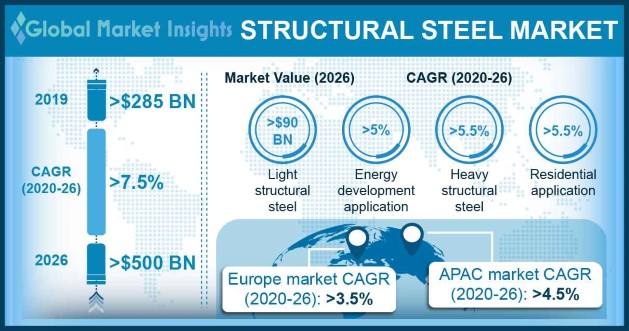
To Collaborate Scientific Professionals around the World
Conference Date November 23-24, 2022
For Sponsors & Exhibitors
Speaker Opportunity
Useful Links
Supported By
All accepted abstracts will be published in respective Conference Series International Journals.
Abstracts will be provided with Digital Object Identifier by
